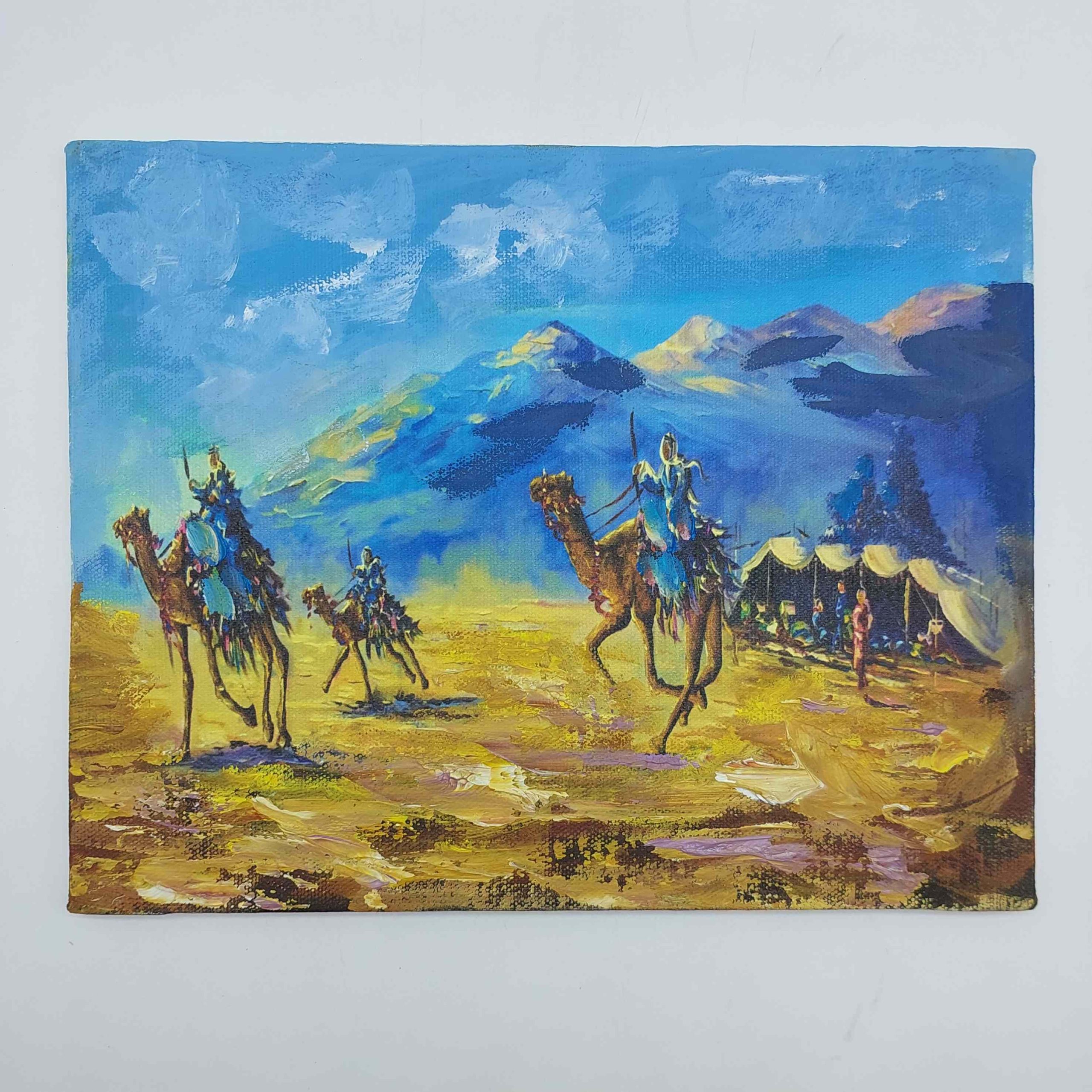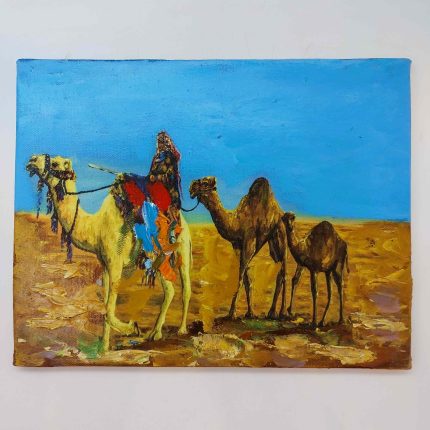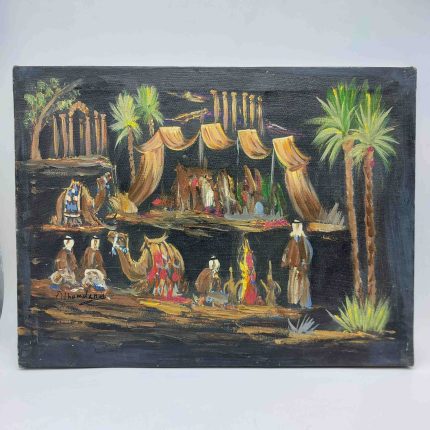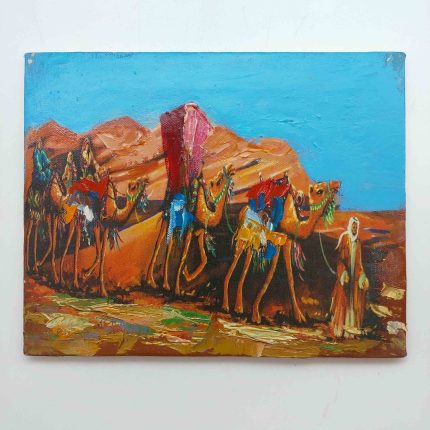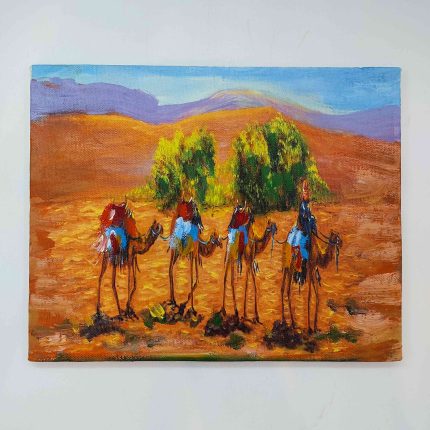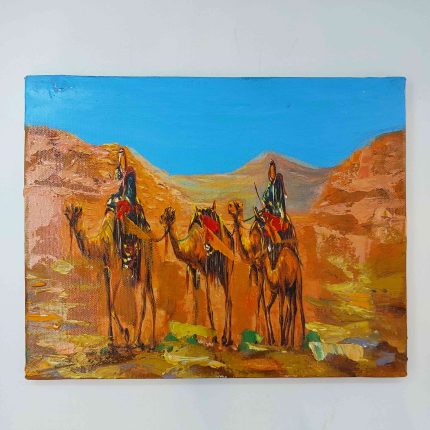Artist Name: Ali Al hamdan
Art Type: Hamdmade
Art category: Desert Camel
Technique: Acrylic Painting
Paint Material: Acrylic Paint
Acrylic Painting On Canvas
Width: 25 cm
Hight: 20 cm
Packing: Rolled and shipped in a solid tube
Shipping: Wordwide
Our Art Gallery Google Map Location : https://maps.app.goo.gl/9nZpEuB1xPagHEmb8
Acrylic painting is a popular medium for artists due to its versatility and fast drying time. It involves using acrylic paints, which are made with a pigment suspended in an acrylic polymer emulsion, to create colorful and vibrant artworks.
To get started with acrylic painting, here are some basic steps:
- Gather Supplies: Acrylic paints, brushes, a palette, canvas or painting surface, palette knife, water container, and a protective cover or apron.
- Prep the Surface: Prepare your canvas or painting surface by applying gesso, a primer that helps the paint adhere better to the surface and prevents it from soaking into the canvas.
- Mix Colors: Squeeze out the acrylic paints onto your palette and mix them to create the desired colors. Acrylic paints can be mixed with water to thin them down or with a medium to modify their drying time or texture.
- Start Painting: Begin by sketching your subject lightly on the canvas using a pencil or a thin brush and thinned-down paint. Then, layer the colors gradually, starting with lighter shades and building up to darker tones. You can use brushes, palette knives, or other tools to create different textures and effects.
- Experiment and Explore: Acrylic paints are versatile, so feel free to experiment with different painting techniques, such as dry brushing, glazing, or impasto. Try different brush strokes, blending techniques, and color combinations to achieve the desired outcome.
- Allow for Drying Time: Acrylic paints dry quickly, especially when applied in thin layers, which allows you to work faster and make adjustments. However, it’s important to wait for each layer to dry before applying additional paint or details.
- Clean Up: Clean your brushes and other tools with water before the paint dries to prevent them from getting damaged. You can also use a brush cleaner or mild soap for thorough cleaning.
Remember, practice is key to improving your skills in acrylic painting. Don’t be afraid to make mistakes and learn from them. Enjoy the process and let your creativity flourish!

 Art Work
Art Work